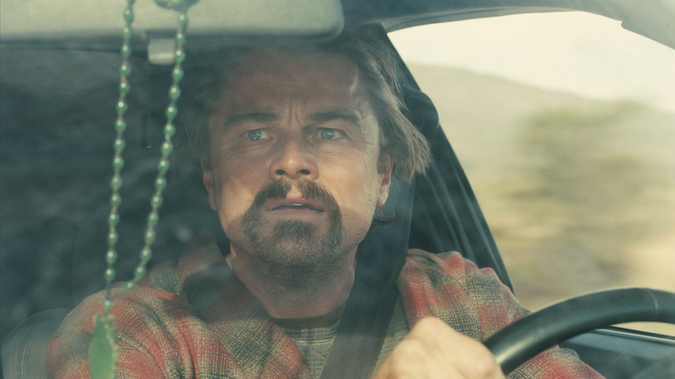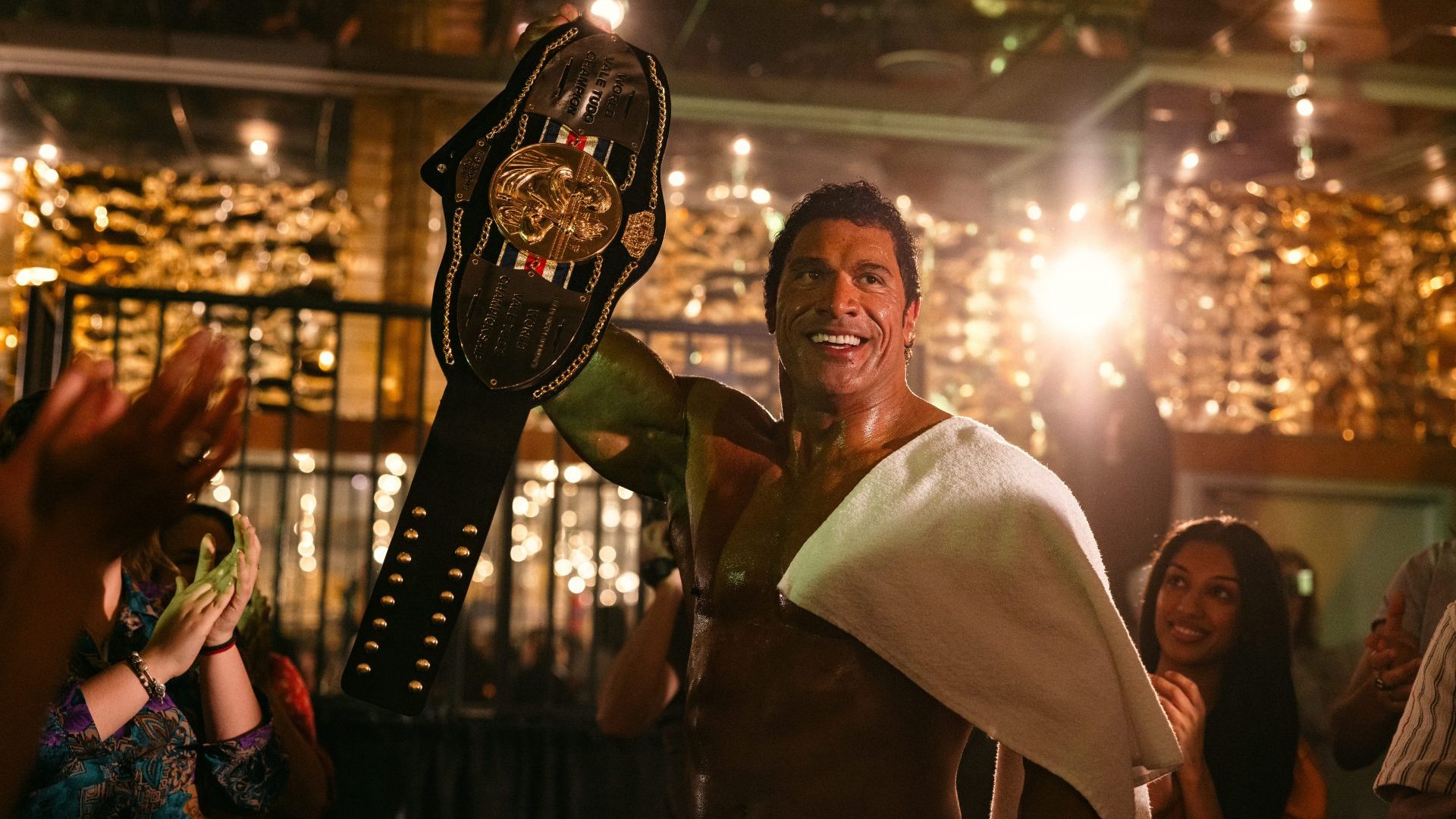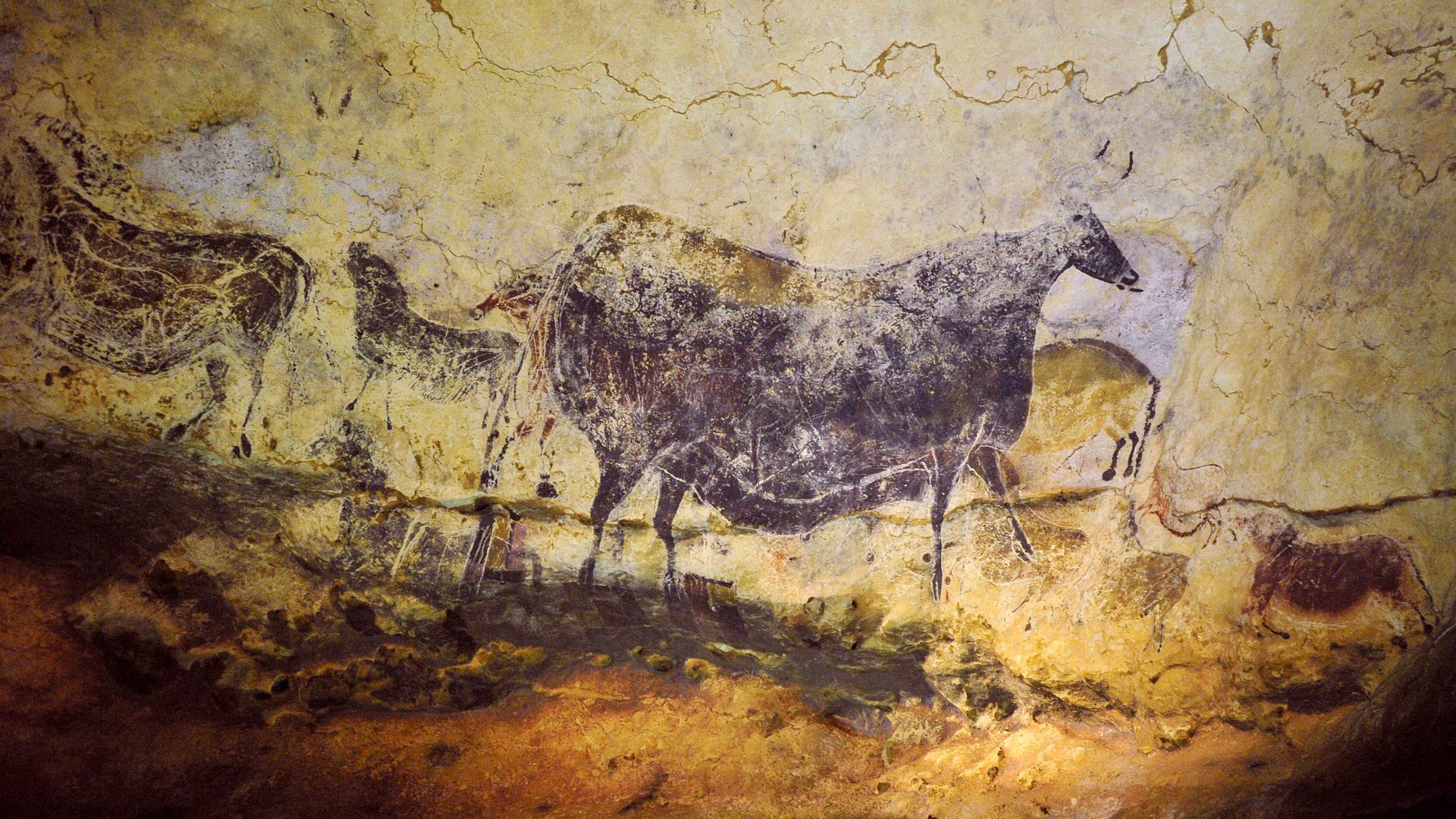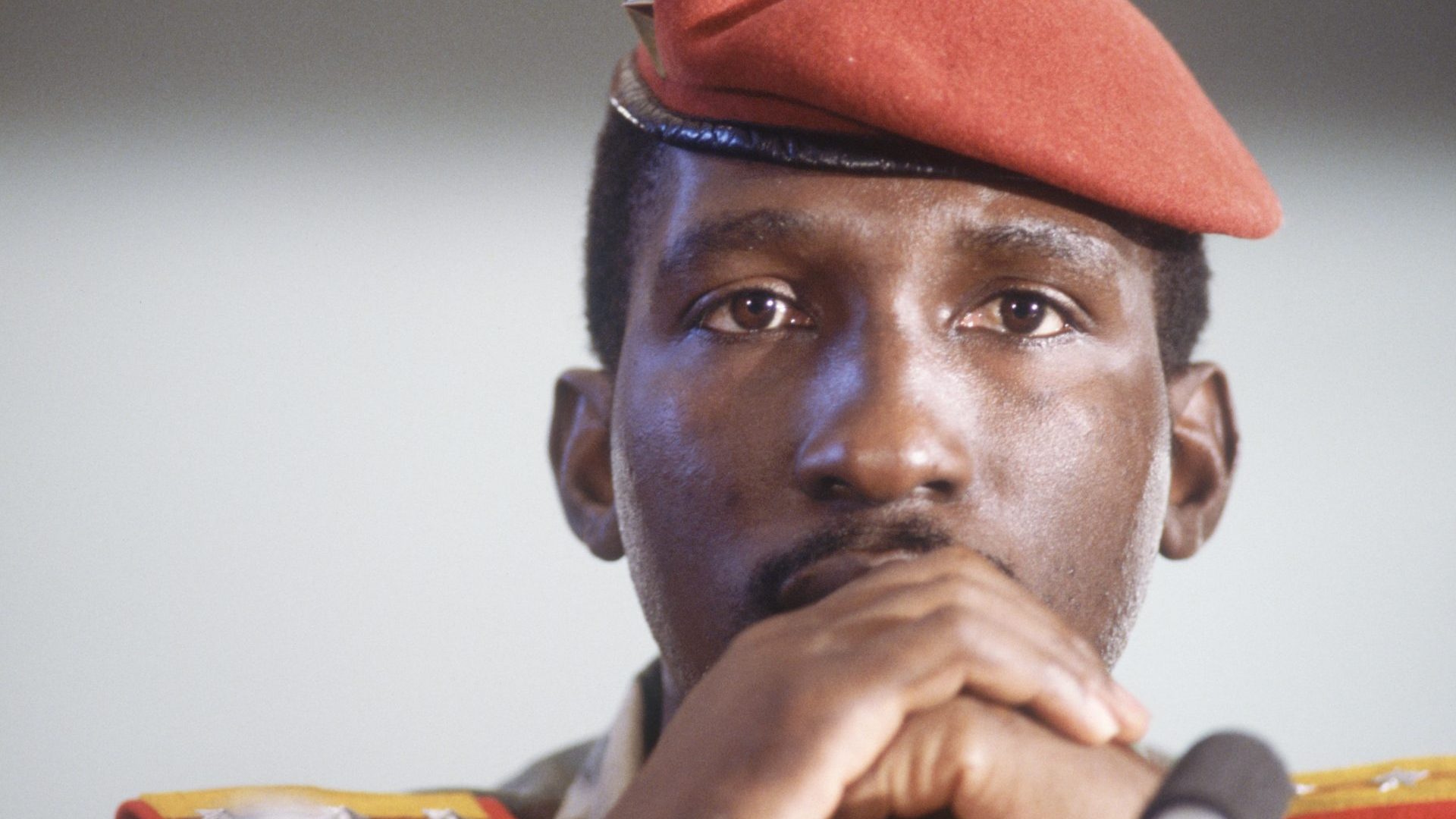PICK OF THE WEEK
The Smashing Machine (general release)
In June, to commemorate the 250th anniversary of American independence, Donald Trump is hosting a mixed martial arts event in collaboration with the Ultimate Fighting Championship company on the south lawn of the White House. Dana White, the UFC’s chief executive, is one of the president’s best friends and sat in his box at the Charlie Kirk memorial in Arizona. In March, the sport’s most notorious champion, Conor McGregor addressed reporters in the White House briefing room before a special St Patrick’s Day meeting with Trump – who is a regular at UFC fight nights.
But the sport was not always so culturally powerful or central to American life. Benny Safdie’s The Smashing Machine – his first feature without his brother Josh – is set between 1997 and 2000, the UFC’s breakthrough years when it was starting to establish its core identity, rules and true money-making potential.
The central figure is Mark Kerr (Dwayne Johnson), an MMA pioneer who had been a free style wrestling champion, did much to popularise the sport but merits only two brief mentions in Michael Thomsen’s definitive history of the UFC, Cage Kings (2023). He struggled with opiate addiction, the physical punishment intrinsic to the new sport and his relationship with his future wife, Dawn Staples (Emily Blunt).
Though talk of an Oscar nomination may be premature, Johnson is nothing short of a revelation. In a curly black hairpiece and facial prosthetics, he cuts a very different figure to his usual persona as the indestructible all-American action hero who doesn’t take himself too seriously.
On the contrary: he portrays Kerr as a cauldron of repression, impeccably polite and measured – until, in a moment I shall not spoil, the beast within bursts forth to jaw-dropping effect. On top of his addiction, he appears to suffer from obsessive-compulsive disorder and co-dependency with Dawn – Blunt excellent, as ever, in the part.
In one scene, Johnson lumbers like an ogre backstage at a venue, impassive and forbidding, and then crumples, weeping, in the dressing room. For an actor associated with cartoonish bonhomie, Johnson shows himself to be capable of great subtlety: similar in this respect to Dave Bautista, another former professional wrestler who has proved himself a screen performer to be taken very seriously indeed.
Safdie wisely limits himself to one training montage, opting instead for delicate brushstrokes and perfectly judged understatement. The Smashing Machine has more in common with Darren Aronofsky’s The Wrestler (2008) or David O’Russell’s The Fighter (2010) than with, say, the Rocky franchise. It is also one of the most interesting films of the year.
Suggested Reading


Why One Battle After Another must win Best Picture
PHOTOGRAPHY
Lee Miller (Tate Britain, London, until February 15)
“I IMPLORE YOU TO BELIEVE THAT THIS IS TRUE.” So cabled Lee Miller to Vogue in April 1945 after she had photographed the horrors of Buchenwald. Even in wartime, the high-fashion magazine steered clear of brutal imagery. But Miller – whose face, drawn by Georges Lepape, had appeared on the cover of Vogue’s British and American editions in March 1927 – prevailed.
Born in 1907 in Poughkeepsie, upstate New York, Miller packed multiple lives into her 70 years – and this landmark exhibition, curated by Hilary Floe and Saskia Flower, assembling around 230 prints (some never previously displayed), does full justice to one of the most remarkable cultural figures of the 20th century.
After her early success as a model – photographed by Cecil Beaton, Edward Steichen, and Arnold Genthe – she transformed herself into a luminary of the Parisian avant-garde, deciding she would “rather take a picture than be one” and collaborating closely with Man Ray, who was also her lover.
Together, they pioneered ‘solarisation’, a technique involving partial development of the photograph and the creation of a halo-like effect. The luminous eroticism of their work foreshadowed Robert Mapplethorpe’s images of the body and flowers, half a century later.
In Cairo, she honed the compositional methods, printing techniques and eye for the extraordinary which served her – and the world – so well when she became a chronicler of the century’s greatest horrors. For a woman in this era to secure accreditation as a war correspondent required formidable character, determination and sense of mission, but Miller had all in abundance.
The images from Dachau and Buchenwald have lost none of their devastating power. In the same gallery is displayed the iconic photograph of Miller washing off the filth of the camps in Hitler’s bathtub in Munich.
But – of course – no easy act of ablution was possible. As she wrote to her future husband Roland Penrose in September 1945: “This is a new and disillusioning world… Peace with a world of crooks who have no honor, no integrity, and no shame is not what anyone fought for.” It is a melancholy measure of Miller’s humanity and artistic sensibility that she never truly recovered.
FILM
DIVA (4K UHD & Blu-Ray, STUDIOCANAL)
The New Yorker’s formidable film critic Pauline Kael was so impressed by Jean-Jacques Beneix’s 1981 debut feature that she compared him to Orson Welles. Adapted from the eponymous novel by Daniel Odier (AKA Delacorta), DIVA launched the cinéma du look – an aesthetic that emphasised style and visual panache and would flourish not only in movies such as Luc Besson’s Subway (1985) and Beneix’s own Betty Blue (1986) but in advertising, rock videos and graphic design.
For a crime thriller, the premise is decidedly eccentric: an opera-obsessed postman Jules (Frédéric Andréi) makes an illicit tape of soprano Cynthia Hawkins (Wilhelmenia Fernandez) – who has always refused to be recorded – singing an aria from the 19th composer Alfredo Catalani’s La Wally.
Soon, he is being pursued by a pair of thugs known as “Antillais” (Gérard Darmon) and “Le Curé” (Dominique Pinon). A diminutive skinhead in shades, who hates everything (“I don’t like cars”, “I don’t like Beethoven”, “I don’t like elevators”), Pinon’s character is one of the most memorable henchmen in movie history.
A neo-noir tale bathed in a wash of blue, DIVA also set a standard for weird spaces in 1980s movies: Jules’s flat is, an inexplicably vast loft set above a graveyard of cars that he describes as “a monument to disaster, deluxe style”. Braided into the main plot is the unlikely friendship he develops with Cynthia, who is being chased by two Taiwanese bootleggers seeking the precious tape (or, better still, a recording deal).
More than 40 years since its release, the movie still fizzes with surreal panache, exhilarating visual impact and an aura of chic oddity. It also includes one of cinema’s greatest chase sequences, through the Parisian Métro – up there with Bullitt (1968) and The French Connection (1971). A true cult classic, beautifully restored.
THEATRE
Mary Page Marlowe (The Old Vic, London, until November 1)
As the epigraph to his 2016 play, Tracy Letts quotes Joan Didion: “I think we are well advised to keep on nodding terms with the people we used to be, whether we find them attractive company or not”.
In this captivating UK premiere, directed by Matthew Warchus, five actors play the eponymous character at various points of her life in Ohio and Kentucky: Alisha Weir (aged 12); Eleanor Worthington-Cox (19); Rosy McEwen (27 and 36); Andrea Riseborough (40, 44, and 50); and Susan Sarandon (59, 63 and 69). But the drama – which stretches from 1946 to 2015 – is not linear, structured instead around 11 scenes that present Mary Page in a kaleidoscopic range of situations, moods and predicaments.
As she tells her therapist in 1982, aged 36: “I’m not the person I am. I’m just acting like a person who is a wife and a mother. I know what that means, I know the levers to pull to be that person. I’m a great actress.” The notion of life as a production, a sequence of tableaux and of morphing psychological traits, is strengthened by the “in the round” arrangement to which Warchus, in his final year as the theatre’s artistic director, has restored the Old Vic’s auditorium.
It is a tribute to the other members of the cast – as children, husbands, parents, a lover, a nurse – that the star wattage of Sarandon and Riseborough does not skew this complex, compassionate and often hilarious exploration of a woman’s identity. Mary Page Marlowe is a diamond with many faces.
BOOK
Against the Machine: On the Unmaking of Humanity – Paul Kingsnorth (Particular Books)
Precisely because I am a tech-dependent atheist and irredeemable urbanite, I read as much of Paul Kingsnorth’s writing as I can get my hands on. In 2009, after years of conventional activism, he co-founded the Dark Mountain Project, a network of writers and artists who took eco-collapse as a given and shifted their focus to the appropriate cultural and behavioural response.
In 2014, Kingsnorth’s wonderful novel The Wake, written in a variant of Old English, was longlisted for the Booker Prize. Now, in Against the Machine, he develops themes familiar to readers of his Substack newsletter, The Abbey of Misrule. “A huge change is birthing itself,” he writes, “a change in our human relationship with nature, with each other, with our past, with our tools. With everything.”
What we call modernity, he says, is better described as “the Machine”, the complex of grinding forces that have pushed us away from the past, people, place, and prayer. “We in the West,” he writes, “are living inside an obsolete story. Our culture is not in danger of dying; it is already dead.” We are “people with everything and nothing all at once.”
For his part, Kingsnorth has withdrawn to rural Ireland with his family, grows his own food, home-schools his children and has converted to Orthodox Christianity. There are echoes here of Rod Dreher’s influential book, The Benedict Option (2017) and the late Alasdair MacIntyre’s classic text, After Virtue (1981).
You do not have to share his yearning for a “counter-revolution”, “restoration” and “politics from an older world” to be intrigued by his analysis of the degradations inflicted upon us by urbanisation, atomisation and the digital revolution. This is an eloquent, compelling work of proud contrarianism. “Become human again,” Kingsnorth writes. “Remain human despite it all.”




